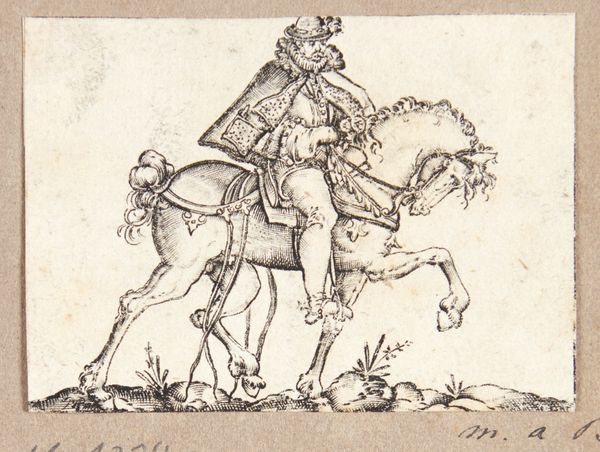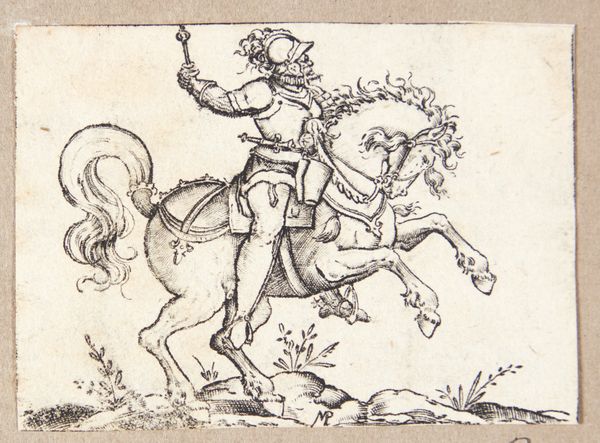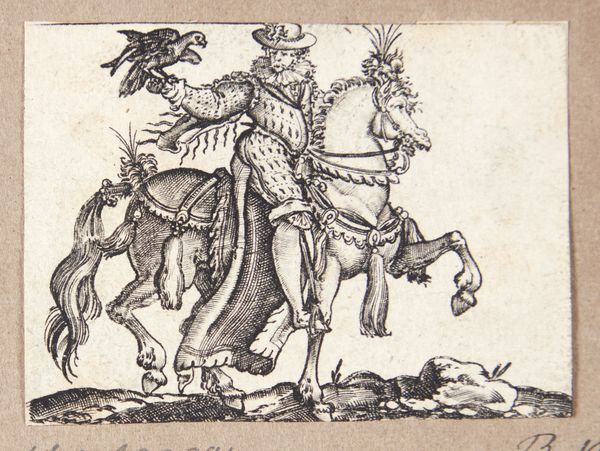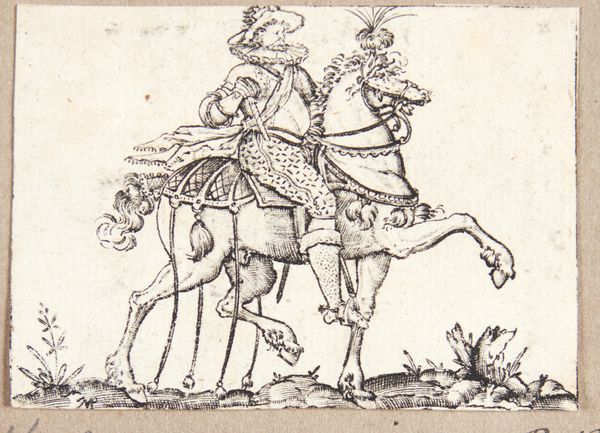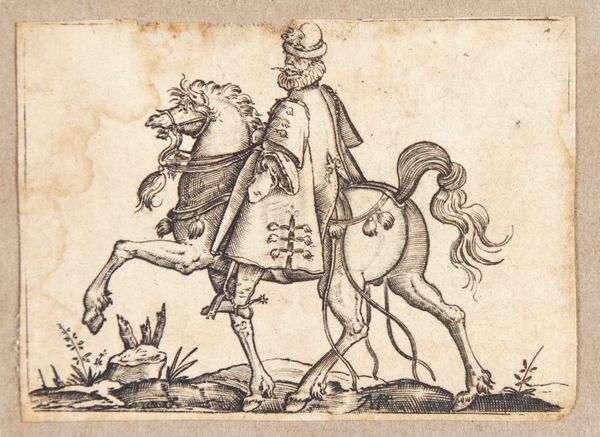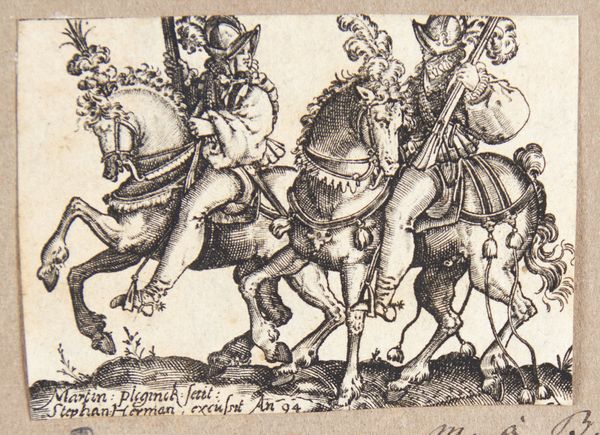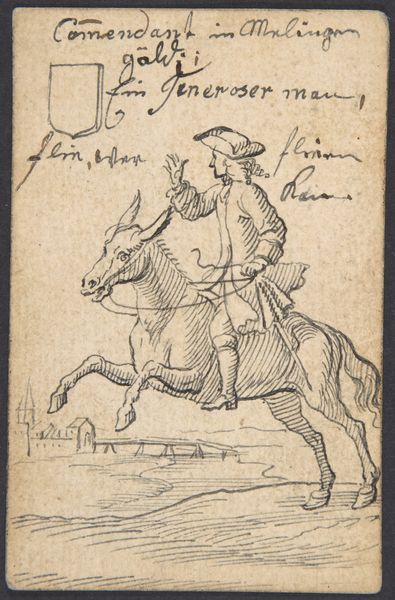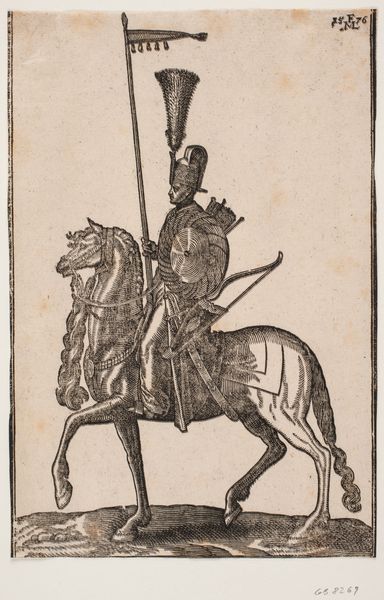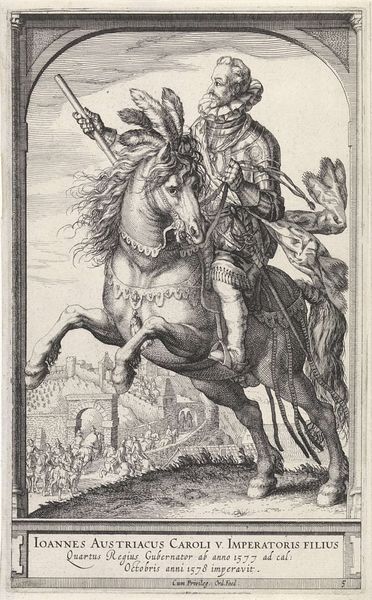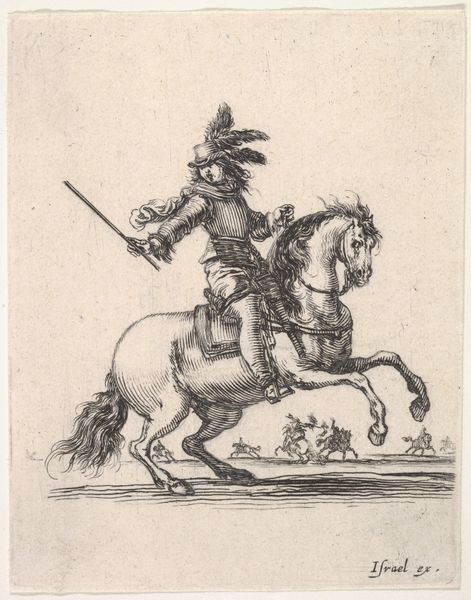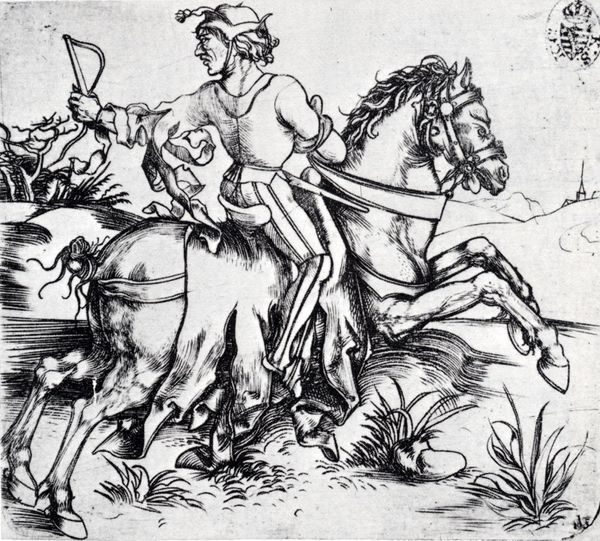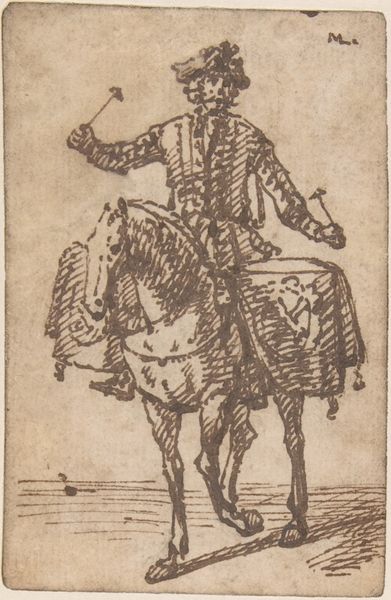
print, engraving
#
portrait
# print
#
mannerism
#
figuration
#
line
#
history-painting
#
engraving
Dimensions: 49 mm (height) x 64 mm (width) (bladmål)
This is ‘Rytter vendt mod højre’ or ‘Rider facing right’, a pen and black ink drawing made around 1590 by Martin Pleginck. It is a fairly standard depiction of a rider on horseback. It's likely that this drawing was made in Northern Europe. We can assume this due to the costume of the rider, his beard and hat, and the tack on the horse. Equestrian portraits in the Renaissance were used to convey power, status, and control. They became increasingly popular as emblems of leadership, especially among the aristocratic elite. Horses were expensive, but so were artists. Although this drawing is small, the ability to commission an artist at all signals wealth and power. As art historians, we can use online databases and other visual culture resources to learn more about Pleginck’s world. This helps us to understand the relationship between art and society.
Comments
No comments
Be the first to comment and join the conversation on the ultimate creative platform.
